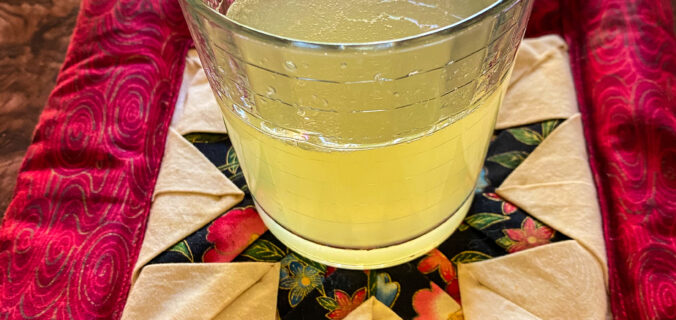I’ve consumed so many Gin and Tonics in recent years, my breath alone would probably cure malaria.
Twasn’t always thus. I actually despised G&Ts throughout the first half of my drinking career—not due to the gin, but because of the tonic.
For decades, the only brand choices for the mixer component of a Gin and Tonic were Canada Dry or Schweppes—both cloyingly sweet (thanks to their loads of high fructose corn syrup) and hardly bitter at all (thanks to their minuscule amounts of quinine, the ingredient used to treat malaria). Believe me, I wanted to like G&Ts: They’re easy to make, refreshingly cold on a hot summer day, and have the kind of back story (including both the expansion of the British Empire and the Allied triumph in the Pacific in World War II) that most other cocktails would die for.
But a Gin and Tonic made with Canada Dry or Schweppes always reminded me of a wine cooler gone bad.
Then, about a dozen years ago, came a new thing: artisanal tonic water.
It was our good friends Vickie and Terry who introduced us to fancy tonic at a backyard dinner party. I don’t recall which brand it was—Fever Tree, Q Mixers, or some other—but this Gin and Tonic was a revelation. Instead of tooth-curling sweetness, my tongue was touched with herbs and honey and just a hint of sharpness, counterbalanced by the tartness of the lime. And here’s the main thing: I could taste the gin.
Since then, the number of small-batch tonic waters has exploded; all reject corn syrup in favor of cane sugar or agave, and not much of it, while upping the bitter quinine and often including other botanicals. I try these microbrew tonics whenever I can find them (which isn’t easy in Oregon, where the state still controls the inventory at liquor stores), but I’ve yet to find one that surpasses Fever Tree Premium Indian.
The G&T itself offers plenty of room for experimentation:
- There’s the Vodka Tonic, which, given the plethora of flavored vodkas out there, can taste like almost anything. (Can I interest you in a Sweet Potato Tonic, perhaps?)
- The Gin Rickey, which dispenses with the tonic entirely and substitutes club soda.
- The Gin Sonic, which uses equal parts tonic and club soda.
- The Gin Tonica, a favorite of ours at Hearsay Restaurant & Lounge in Ashland, Ore.; it includes a healthy dose of grapefruit bitters and is garnished with a rosemary sprig.
- The Parisian, which adds a bit of elderflower liqueur and equal parts tonic and champagne—like a French 75 turned sideways.
- And then there is the Gin and Tonic recipe in Jeffrey Morgenthaler’s The Bar Book: Elements of Cocktail Technique, which calls for making your own tonic water from scratch, using quinine syrup distilled from powdered cinchona bark (“red will be more assertive, yellow is milder and less bitter”) and other ingredients not often found in the spice aisle.
My search for new twists on the old G&T is ongoing but most recently landed me here: the Dandy Lion.
Created by Chicago bartender Stephen Cole (best known for an outrageous invention he calls the Bitter Giuseppe), this version of the Gin and Tonic includes cucumbers muddled with absinthe, lemon juice instead of lime, and just a bit of simple syrup for balance. The result is bracing and delicious and not at all like any G&T you’ve ever had.
Cole’s recipe calls for the Dandy Lion to be served up, but feel free to drink it on the rocks. It’s another hot one out there. And you don’t want to catch malaria.
Dandy Lion
Courtesy of Stephen Cole
3 thin slices peeled cucumber, plus 1 slice for garnish
1/2 ounce absinthe
2 ounces gin
3/4 ounce lemon juice
3/4 ounce simple syrup
2 to 4 ounces tonic water, chilled
In a cocktail shaker, muddle the cucumber until slightly broken up, about 20 seconds. Add the absinthe and let macerate for about 30 seconds. Add the gin, lemon juice, and simple syrup, then fill the shaker with ice and shake vigorously until completely mixed, about 20 seconds. Strain into a Collins glass (or any tall glass tumbler), top with tonic, and garnish with a cucumber slice.

